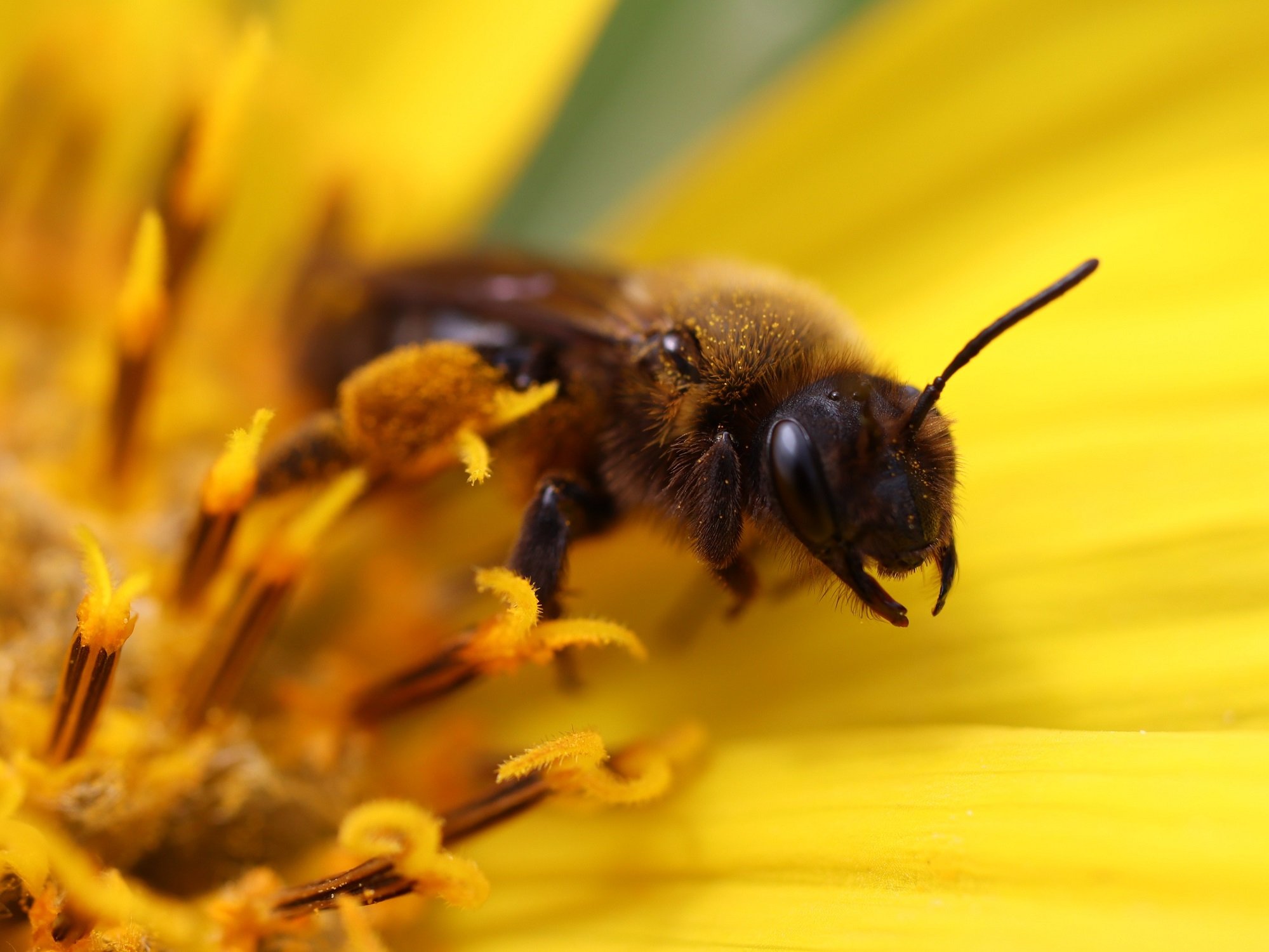
Andrenidae
Andrenidae (mining bees)
Of the 205 species of bees in the Andrenidae family found in Canada, 90 of them occur in Alberta, most of them in the Andrena genus.
The andrenid bees (commonly known as mining bees) is a very large family of solitary, ground-nesting bees. Many are dark, black, and rather non-descript bees; others have bright red colors. Typically small to moderate-sized bees, they are somewhat dorsoventrally flattened and have an oval rather than parallel-sided abdomen. They have scopae on their legs and are commonly oligolectic. Andrenids are among the earliest bees to emerge in the spring, frequently seen visiting Salix (willows). Many of them are active only during this brief period, remaining underground through summer, fall and winter.
Andrena (mining bee)
There are 68 species of Andrena that occur in Alberta. Andrena has the highest number of species of any genus in Canada.
Andrena milwaukeensis
Andrena lupinorum
Andrena species are small to medium-sized (9 - 17 mm), lightly fuzzed bees ranging in colour from gray and brown to bright red. Males are smaller and more slender than females. Andrena bees can be distinguished from most other small bees by the broad velvety areas in between the compound eyes and the antennal bases, called facial foveae. They also tend to have very long scopal hairs on the hind leg.
Andrena bees are often the first bees to fly in the spring, reaching their peak abundance in the spring with a few species emerging in the fall and a very few species out in mid-summer. They spend the winter in the underground cells as prepupae, emerging as adults when the ground begins to warm. They mate, then the females seek sites for their nest burrows where they construct small cells. They provision the cells with a ball of pollen mixed with nectar, where they lay an egg then seal the cell. Andrena usually prefer sandy soils for a nesting substrate, near or under shrubs. They are solitary bees, but may nest in aggregations.
Many species are oligectic and frequently can be found visiting early-blooming flowers such as Salix (willow).
Calliopsis (mining bee)
Of the 6 species of Calliopsis bees found in Canada, 2 of them occur in Alberta.
Calliopsis are small to medium-sized, flattish bees (typical of bees in the Andrenidae family) which often have yellow and black stripes on their abdomens, yellow markings on their faces and a shiny black thorax under a light fuzz of hair. They carry pollen on hairs located on their tibia (lower leg). They are solitary nesters, but may be found in aggregations with other nests. They are commonly found in urban and other heavily used landscapes where they are attracted to the hardpacked open soil of playing fields, road edges, construction sites, lake margins, and borrow pits. They tend to prefer to forage on the flat flowers of the Asteracea family.
Panurginus (mining bee)
Of the four species of Panurginus bees found in Canada, two of them occur in Alberta.
Panurginus bees are small, dark bees with yellow markings on black bodies, very little hair, slender, and with round faces which typically fly in the spring. Scopa are located on the tibia and basitarsus (i.e., the two lower segments of the bee’s leg).
Some species are polylectic, while others are more selective in their favoured flower hosts.
Perdita (mining bee)
Perdita are very small and small bees (2 – 6 mm). Their body hairs are sparse, and they are slightly metallic blue or green, almost always with some light-colored markings on face. Abdomen markings vary from none to stripes, often forming small blotches on the sides. The pollen-carrying hairs on their hind legs are often sparse and hardly noticeable.
Perdita typically nest in bare, sandy soil.
Most species are oligoleges with respect to pollen and will only collect pollen from a few closely related species or genera of plants.
They may be parasitized by Neolarra cuckoo bees, which lay eggs in their nests given the opportunity.
Pseudopanurgis (mining bee)
Of the 11 species of Pseudopanurgis bees found in Canada, 6 of them occur in Alberta.
Pseudopanurgus bees are very small to small (3 - 10 mm), slender, black bees, frequently with yellow markings, but no abdominal stripes. They are primarily detected in the fall. Their pollen-carrying hairs are located on their hind tibia and basitarsus. They nest in flat, open bare soil.
Pseudopanurgus are generally oligolectic, with specific floral preferences.









